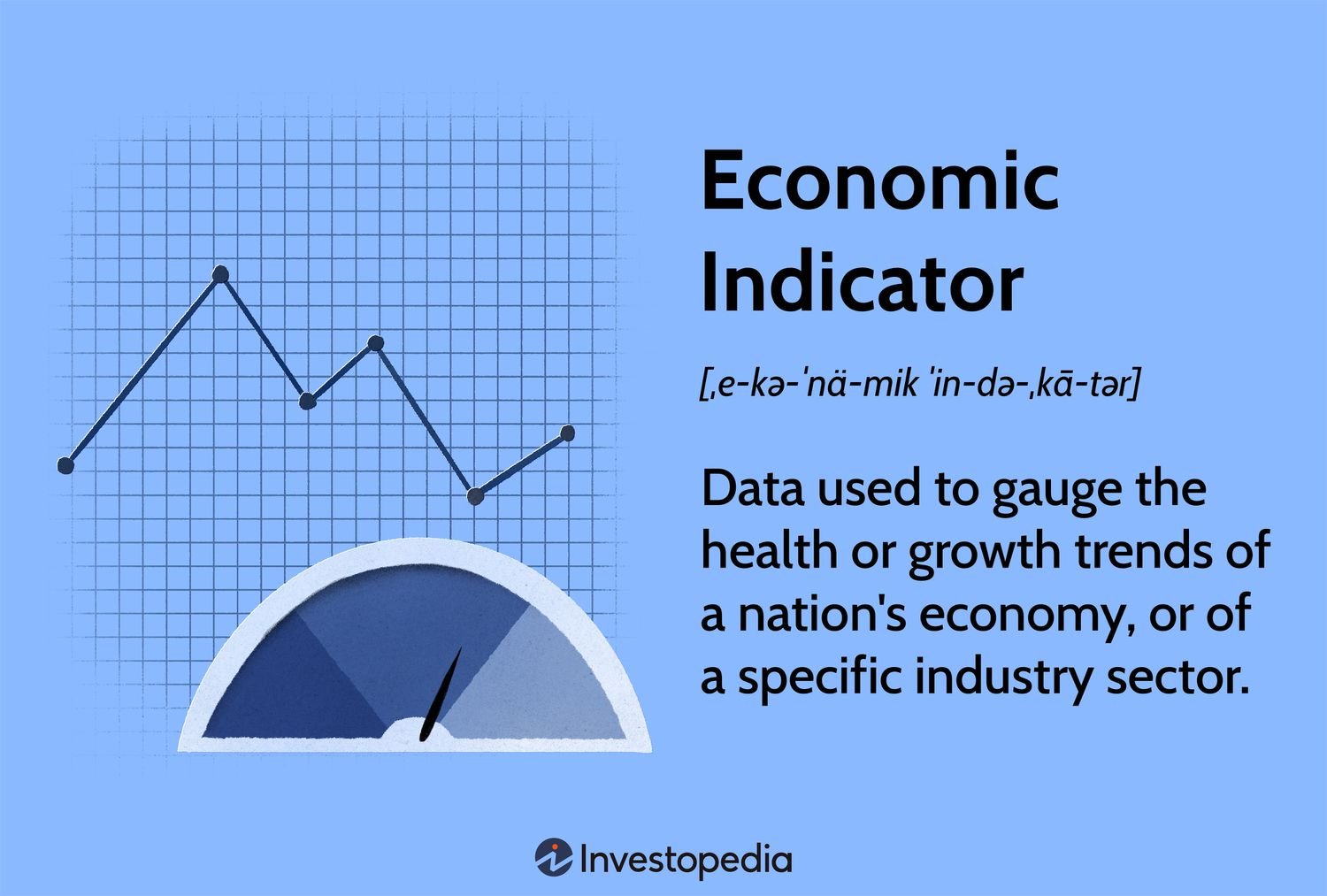Understanding economic indicators and their impact is crucial for anyone looking to navigate the world of finance and business. But what exactly are economic indicators, and why do they matter? In simple terms, economic indicators are statistics that provide insights into the health and performance of an economy. They can range from employment rates and GDP growth to inflation and consumer spending patterns. By analyzing these indicators, individuals and businesses can gain a better understanding of the current state of the economy and make informed decisions. In this article, we will delve into the world of economic indicators, explore their significance, and highlight how they can shape various aspects of our lives. So, let’s embark on this journey of unraveling the intricacies of understanding economic indicators and their impact.
Understanding Economic Indicators and Their Impact
Introduction:
In today’s rapidly changing world, understanding economic indicators and their impact is crucial for individuals, businesses, and governments alike. Economic indicators are statistical data points that provide insights into the overall health and direction of an economy. They help us gauge the performance and predict future trends, allowing us to make informed decisions. In this article, we will delve into the world of economic indicators, exploring their types, significance, and how they influence various stakeholders.
Types of Economic Indicators:
Economic indicators can be broadly categorized into three main types: leading indicators, lagging indicators, and coincident indicators. Each type serves a different purpose and offers unique insights into the economy.
1. Leading Indicators:
Leading indicators are economic measurements that change before the economy starts to follow a particular pattern or trend. These indicators are used to predict the direction of the economy and provide early warnings of potential changes. Some examples of leading indicators include:
Unemployment claims: An increase in the number of unemployment claims can signal an upcoming economic downturn.
Building permits: A rise in building permits suggests a potential increase in construction activity, indicating economic growth.
Consumer sentiment index: Consumer confidence is often considered a leading indicator, as it reflects people’s optimism or pessimism about the economy’s future.
2. Lagging Indicators:
Lagging indicators, as the name implies, are economic measurements that change after the economy has already shifted in a particular direction. These indicators confirm or validate trends that have already taken place. They are often used to assess the overall health and stability of the economy. Some examples of lagging indicators include:
Gross Domestic Product (GDP): GDP is a measure of the total value of goods and services produced in a country. It is considered a lagging indicator as it reflects economic performance in the past.
Unemployment rate: The unemployment rate is another lagging indicator that indicates the health of the job market. It rises during economic downturns and falls during periods of growth.
Consumer price index (CPI): CPI measures changes in the prices of a basket of goods and services over time. It provides insights into inflation or deflation and is a crucial lagging indicator.
3. Coincident Indicators:
Coincident indicators are economic measurements that change simultaneously with the overall economic cycle. These indicators offer real-time insights into the current state of the economy. Some examples of coincident indicators include:
Industrial production index: This index measures the output of industrial sectors such as manufacturing, mining, and utilities. A rising industrial production index indicates economic expansion, while a declining index suggests a contraction.
Retail sales: Retail sales data reflects the total sales of goods and services by retailers. It provides a snapshot of consumer spending patterns and overall economic activity in real-time.
Personal income: Personal income measures the total income received by individuals from all sources. It reflects the ability of individuals to spend and contribute to economic growth.
The Impact of Economic Indicators:
Economic indicators have a significant impact on various stakeholders, including individuals, businesses, and governments. Let’s explore how each is influenced by these indicators:
1. Individuals:
Economic indicators affect individuals in several ways, influencing their financial well-being and decision-making processes. Some ways individuals are impacted include:
Employment opportunities: Indicators like the unemployment rate help individuals assess the availability of jobs and make informed decisions about their career paths.
Inflation: Indicators like the consumer price index (CPI) provide insights into the purchasing power of individuals’ incomes. Higher inflation erodes the value of money, impacting individuals’ ability to afford goods and services.
Interest rates: Indicators like the Federal Reserve’s interest rate decisions affect borrowing costs for individuals, impacting their ability to buy homes, vehicles, or fund education.
2. Businesses:
For businesses, economic indicators provide valuable information for strategic planning, risk assessment, and market analysis. Businesses are influenced by indicators in various ways, including:
Supply and demand: Indicators like industrial production and retail sales help businesses gauge market demand for their products or services. This data aids in production planning and inventory management.
Investment opportunities: Indicators like GDP growth rates and business investment data guide businesses in identifying potential markets and assessing investment viability.
Consumer behavior: Indicators such as consumer sentiment and personal income inform businesses about consumer spending patterns, helping them tailor marketing strategies and product offerings accordingly.
3. Governments:
Governments rely on economic indicators to formulate policies, monitor economic progress, and steer the economy towards growth and stability. Indicators’ impact on governments includes:
Fiscal and monetary policy: Economic indicators shape decisions regarding taxation, government spending, and interest rates. Governments use indicators to monitor economic performance and take appropriate policy measures.
Budget planning: Indicators like GDP growth rates and inflation help governments forecast revenue and allocate resources effectively.
Social programs: Indicators such as poverty rates and income inequality data guide governments in designing and targeting social welfare programs.
Conclusion:
Understanding economic indicators and their impact is crucial for navigating the complex world of economics. Whether you are an individual, business owner, or government official, keeping track of these indicators enables informed decision-making and proactive planning. By analyzing leading, lagging, and coincident indicators, we can gain valuable insights into economic trends, accurately predict changes, and adapt strategies accordingly. Monitoring economic indicators empowers us to comprehend the nuances of the economy and position ourselves for success in an ever-changing global landscape.
FAQs:
1. What are economic indicators?
Economic indicators are statistical data points that provide insights into the overall health and direction of an economy. They help us gauge the performance and predict future trends, allowing us to make informed decisions.
2. What are the types of economic indicators?
The three main types of economic indicators are leading indicators, lagging indicators, and coincident indicators. Leading indicators anticipate future economic changes, lagging indicators validate past trends, and coincident indicators provide real-time insights into the current state of the economy.
3. How do economic indicators impact individuals?
Economic indicators influence individuals in various ways, such as employment opportunities, inflation, and interest rates. These indicators help individuals assess job availability, purchasing power, and borrowing costs, impacting their financial well-being and decision-making processes.
4. How do economic indicators impact businesses?
Economic indicators provide valuable information for businesses, guiding strategic planning, risk assessment, and market analysis. Indicators impact businesses through supply and demand dynamics, investment opportunities, and understanding consumer behavior.
5. How do economic indicators impact governments?
Governments rely on economic indicators to formulate policies, monitor economic progress, and steer the economy towards growth and stability. Indicators shape fiscal and monetary policies, aid in budget planning, and guide the design of social programs.
Please note that the FAQs are provided as a summary and do not include all the details covered in the main article body.
Economic Indicators
Frequently Asked Questions
Frequently Asked Questions (FAQs)
What are economic indicators?
Economic indicators are statistical data that provide insights into the overall health and performance of an economy. These indicators include various measures such as GDP (Gross Domestic Product), inflation rate, employment rate, consumer spending, and trade balance.
Why are economic indicators important?
Economic indicators help policymakers, analysts, and businesses make informed decisions by providing valuable information about the current and future state of the economy. They offer insights on trends, growth rates, and potential risks, allowing stakeholders to assess economic stability, plan investments, and implement effective strategies.
How do economic indicators impact the stock market?
Economic indicators have a significant impact on the stock market as they provide investors with key information about the economy’s performance. Positive indicators, such as increasing GDP or low unemployment rates, often lead to increased investor confidence, resulting in increased stock prices. Conversely, negative indicators can cause uncertainty and lead to decreased stock prices.
What is the relationship between economic indicators and inflation?
Economic indicators and inflation are closely related. Inflation refers to the general increase in prices of goods and services over time. Indicators such as the Consumer Price Index (CPI) and Producer Price Index (PPI) help measure inflation levels. Changes in these indicators can inform monetary policy decisions, such as adjusting interest rates, to control inflation and promote economic stability.
How do economic indicators impact currency exchange rates?
Economic indicators play a crucial role in determining currency exchange rates. Strong economic indicators, such as high GDP growth or low unemployment rates, can increase demand for a country’s currency, resulting in its appreciation. Conversely, weak indicators may lead to decreased demand and depreciation of the currency. Traders and investors closely monitor these indicators to take advantage of currency fluctuations.
How can economic indicators affect consumer behavior?
Economic indicators influence consumer behavior by shaping their perception of the overall economic conditions. For instance, if indicators show a declining economy and rising unemployment, consumers may become more cautious, reducing their spending. Conversely, positive indicators can boost consumer confidence, encouraging them to spend more and stimulate economic growth.
What is the impact of economic indicators on interest rates?
Economic indicators heavily influence interest rates. Central banks and monetary authorities use indicators like inflation, employment rates, and GDP growth to determine appropriate interest rate levels. If indicators signal a growing economy, central banks may raise interest rates to control inflation. Conversely, during periods of economic downturn, central banks may lower interest rates to stimulate borrowing and investment.
How can businesses use economic indicators to make strategic decisions?
Businesses can utilize economic indicators to make informed strategic decisions. By analyzing indicators such as GDP growth, consumer spending, and industry-specific indicators, businesses can assess market conditions, identify trends, and make effective business plans. For example, a company may expand operations during periods of economic growth or adjust pricing strategies during times of inflation to remain competitive.
Final Thoughts
Understanding economic indicators and their impact is crucial for individuals, businesses, and policymakers alike. These indicators provide valuable insights into the current state of the economy, helping us gauge its health and predict future trends. By analyzing indicators such as GDP, unemployment rates, inflation, and consumer confidence, we can make informed decisions regarding investments, hiring, pricing, and consumer behavior. This knowledge empowers us to adapt and respond effectively to economic changes, minimizing risks and maximizing opportunities. Therefore, it is essential to continuously educate ourselves on these indicators and their significance in order to navigate the complex world of economics successfully.



